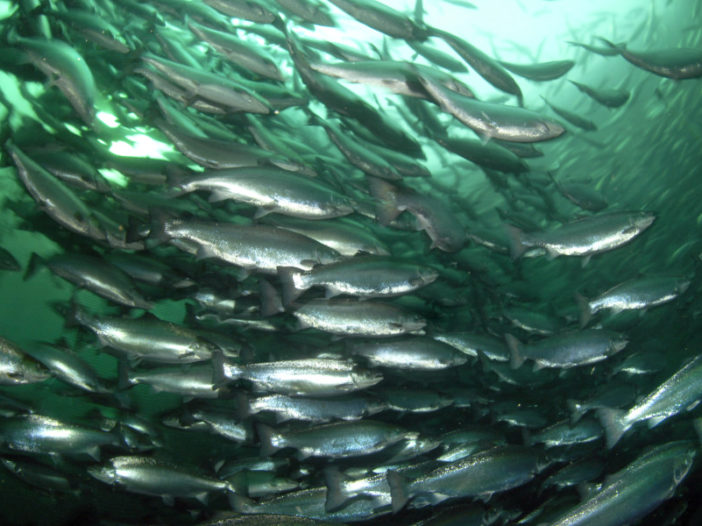
There is a 90 percent deficit in fresh seafood trade in the U.S. A large amount of the fresh salmon consumed in the U.S. is flown in from Europe, Chile and New Zealand, leaving a considerable carbon footprint. Along with an expected 7 to 8 percent annual growth in seafood consumption, there is a strong incentive for creating new, sustainable food systems in the U.S.
While the demand-supply gap keeps growing, there is no growth in sight from wild catch fisheries or net pen operations. Thus, solutions must take a new approach to fish farming and be sustainable. This is where local, land-based aquaculture comes into the picture.
Nordic Aquafarms was started in Norway with a mission to create a more environmentally sustainable way of producing fish — a solution for the future. Nordic Aquafarms is an international front-runner in the land-based fish farming industry. Land-based facilities are indoor production facilities where fish are raised to harvest size in a series of independent tank systems. It is not possible for the fish to escape from our facility, while other potential harmful effects on wild salmon populations are eliminated.
Nordic Aquafarms has done extensive research and development and invested millions in developing the world’s best wastewater treatment system in the recirculating aquaculture systems (RAS) industry today. This is done by using existing technologies and by applying several layers of treatment with different technologies to ensure the highest level of nutrient removal possible today. Neither RAS technology nor our water treatment technology are experimental technologies, as has been stated by some people in Maine. Rather, our in-house engineers have designed land-based facilities for more than 20 years and our production managers are also some of the most experienced with RAS technology in the world.
We are also concerned about the state of the ocean. Thus, we are now proud to be able build facilities in which we remove 99 percent of most pollutants and 85 percent of the nitrogen from the water that is discharged from the facility. In our permit application for the Belfast facility, total suspended solids and ammonia levels in the nitrogen discharge are lower than the background levels in the bay.
The environmental impact of land-based fish farms is rigorously regulated through a series of permits that any land-based aquaculture facility in the U.S. has to obtain from various federal, state and local authorities. We have been in extensive dialog with Maine regulators such as the Department of Environmental Protection, and we are impressed with the thoroughness of the process and the demands we are facing.
Some have raised concerns about the cumulative environmental effects of discharge from several aquaculture facilities that would discharge into Penobscot Bay. We support strict regulations and monitoring of discharge, and we are committed to staying within the discharge limits approved in our permit. Nevertheless, every project should be held responsible on its own merits and be required to adhere to discharge limits within their own permits. They shouldn’t be held accountable for what other companies do or fail to do. The way to limit cumulative nutrient discharge effects is to ensure that all facilities are subject to strict regulation of nutrients in their discharge and to ensure that each company follows its permits.
Aquaculture is identified as one of the key areas to be developed in Maine. Land-based fish farming is rapidly gaining interest in the U.S. now, and we see project proposals emerging throughout the country.
With its long seafood tradition, a favorable political climate encouraging land-based fish farming and rigorous regulations and monitoring programs, Maine can have it both ways. Maine can take a leadership role in the new emerging industry here in the U.S., and it can do it in a way that contributes to sustainable food production for the future.
Marianne Naess is the commercial director for Nordic Aquafarms Inc.
